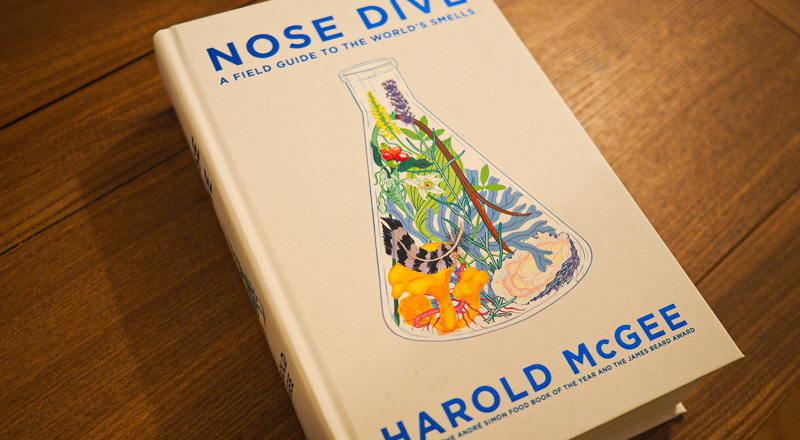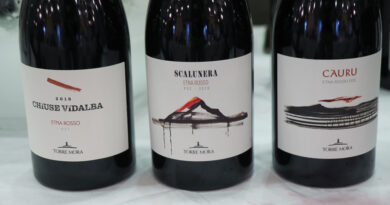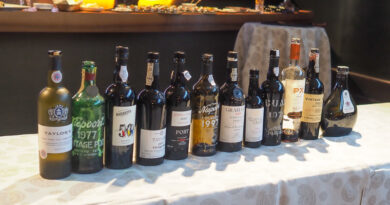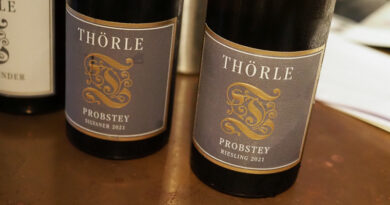Nose dive, a field guide to the world’s smells: an important new book from Harold McGee
Most of the experience of wine comes from the sense of smell. Lisse Garnett reviews an exciting new book on this sensory modality from food writer Harold McGee, which is highly relevant to wine tasting.
When we smell another person’s body, we are actually imbibing tiny body bits, taking in minute volatile pieces of another being which are then detected by receptor patches at the rear of our nostrils. This truth can be applied to the foul stinks of pus and faeces and the fragrant aroma of flowers and madeleine cakes alike. With this in mind American food writer Harold McGee undertook a ten-year olfaction odyssey to map what he describes as the ‘Osmocosm’, an ‘invisible nimbus of flying molecules’ swirling all about us. Charting its genesis back through time, he attempts to identify component scents working on the basis that our brains are able to recognise and label a single smell (dog) despite said smell being in fact a collection of individual aromas (fur, slaver, breath, body, sweat, etc). Once labelled, these molecular components are readily recognisable, and therefore quantifiable in other scent samples. This is a useful tool for examining why things smell the way they do and even how they came to be.
McGee takes us on a marvellous tour of the microcosmic world about the forest floor, dense with fungus and metabolising decomposers. He describes the composite aromas of leaf litter and cites the molecules responsible. Anaerobic microbes emitting putrid sulphides and rancid short chain acids are also present. Delicious lignin digesters: shiitake and oyster mushrooms. And yeasts that give us bread and wine and beer. Beneficent truffles: doubly symbiotic with trees and internalised scent-making bacteria, are examined in great detail. This might be expected from a food writer like McGee. Asking to be discovered, they deliver their precious volatiles up toward the surface of the soil, signalling the buried bonanza beneath — and thereby propagating their kind.
Our author tells us our sense of smell is far less acute than that of a dog, but that because of our prodigious brains we are able to make the most of the powers we have, much in the way our relatively poor hearing has enabled music composition and language development. He delivers his ‘Osmocosm’ in bite sized conceptual pieces. Mapped in chart form, he presents the scents of chemicals presumed present at the Big Bang, thus imagining the aromas of our nascent universe.
SOME SMELLABLE CARBON-SULFUR AND CARBON-NITROGEN INTERSTELLAR MOLECULES
| Smells | Molecules |
| rotting cabbage, sulfurous | methanethiol, CH, SH |
| cooked cabbage, onion, sulfurous | ethanethiol C2H5SH |
| fishy, onions | methylamine CH3NH2 |
As the book progresses this concept is enlarged to include the smell of our planet, plants, food and fruits, advancing onto bodily odours and even the smell of semen and demise. He describes tasting his first grouse, long-hung and gamey, a wild bird in whose flesh he recognised ‘the transfixing funk, chemical and emotional, of animal life and struggle and death’. Simple tables are littered throughout the text, suggesting the chemical causes of the smells mentioned. And the processes that lead to the effluent emanation are described in poetic biographical detail. Component parts of familiar smells give opportunity for fantastic aromatic game play:
SOME INGREDIENTS IN COLA AND CURRY FLAVOURS
| Flavour | Component spices |
| Cola | vanilla, citrus peel, cinnamon, coriander, nutmeg, orange flower |
| Curry | Cumin, coriander, fenugreek, cinnamon, clove, fennel, cardamom, ginger, black pepper, turmeric |
McGee is wonderfully unique. He’s not a chemist, but manages to connect science, scent, human evolution and art in this meaty tome. A chapter entitled ‘Fragrance’ colours the mind with exotic images of ancient and aromatic lost Arab worlds. The word ‘musk’ finds its roots in pre-Islamic Persia where it was associated with sensuality. The poetry of Imru’ as-Qais describes stray musk grains in his lover’s rumpled bed and musk scented oil was said by ancient Chinese travellers to be used to anoint the beards of Persian men. Descriptions of Islamic Paradise feature virginal maidens fashioned from musk and the prophet Muhammads body was said to emit its scent—somehow the sensual had become spiritual. Musk is the mating secretion of male deer matured to a solid form. It serves to scent their genitals, and in doing so attracts the notice of potential mates. No longer commercially acceptable in fragrance because of its animal origins, the perfect synthetic replacement has been fervently sought by perfumers for decades.
Ambergris, an incredibly rare substance is named for us via the Arab word but which actually has its early roots in the Somali language. Obscure and utterly incomprehensible, this substance is formed when an obstruction of indigestible squid quills collects in the gut of a sperm whale. If not expelled it becomes further enriched with undigested food, bile, blood and gut parasites until finally it finds its way to the sea when the whale dies, perhaps aided by the very lump itself. This stinking mass then matures and cures as it drifts in the oceans, becoming less noxious and somehow prized for its incredible aromatic qualities. McGee describes the fragrance as unmatched, emitting ‘facets of the ocean and soil, exotic woods, incense and tobacco’. Ambergris is valued at over twenty thousand pounds per kilo on the open market.
This book is not meant to be read from cover to cover. Instead, it is a useful reference or ‘field guide’ as well as a fantastic source of smell themed anecdotes. All readers may draw something from this but it’s not perhaps a beginner’s ‘Nose Dive’: more the atomised equivalent of Leopold von Sacher-Masoch’s Venus in Furs. There is a deeply personal, subjective yet objective flavour to McGee’s writing, at one point he describes the beefy aroma of his own cauterised tongue. He means to open our eyes to the possibilities of flavour. He isn’t telling us what to smell, but instead shows us what we might discover courtesy of actual molecular content, while at the same time acknowledging smell is interpretative.
As McGee points out, ‘how we register and name and think about smells depends on where we’ve happened to encounter them first.’ We may think that the Amazonian ant tastes of lemon grass and ginger, but to the native Amazonian, lemon grass and ginger taste of ant. This book is a creative entreaty to ‘listen’ to smells, engage our intellect and recognise the enticingly aromatic world about us.
Harold McGee is a former Yale Literature Instructor who writes about the chemistry of food, cooking and flavours.




